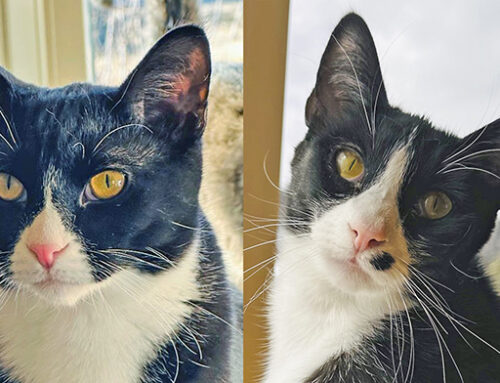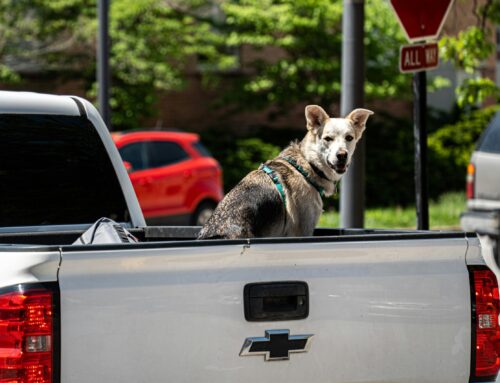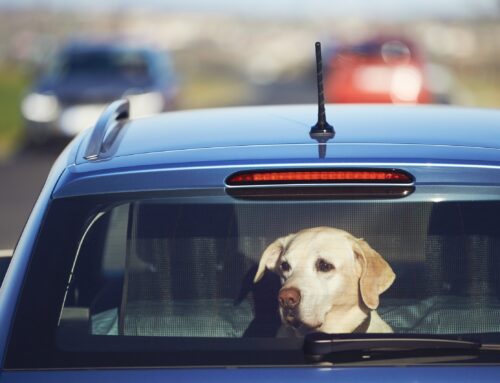In the human world, there are entire fields of research dedicated to making mobility and communication easier for those who have challenges. From titanium prosthetic limbs to technology that helps hearing impaired people, it’s a dynamic and ever-changing world.
People have long been helping disabled pets to live longer, more engaged, and active lives. Many deaf dogs and cats are trained with sign language and visual cues. We’ve all seen heartwarming videos of dogs using wheelchairs. And, what about pet siblings taking on the role of “seeing eye dog” for a visually impaired pet?
Life-enhancing creativity for disabled pets is nothing new, but now there are so many resources and support options for those who are helping.
Mark Robinson has a website called Walkin’ Pets, that offers not only a community but a large array of products that help dogs and other animals overcome a number of different types of disabilities. Walkin’ Pets’ mission statement is “We believe that pets are family and that elderly, disabled and handicapped pets deserve to live a happy, healthy life.” (More at handicappedpets.com)
There is a nonprofit foundation that helps those who cannot afford to purchase mobility aids by donating wheelchairs: https://hpets.org/
Deaf pets used to be labeled as untrainable. Many ended up in shelters with little hope of finding a forever family. Now, deafness is becoming a very manageable disability in the pet world. Petfinder says: “Deafness in animals can be congenital (inherited from birth) or acquired through trauma, drug reactions, or old age. Deafness is more common in white animals, though any animal can be deaf. They can be taught sign language commands and are fully trainable. The only real caveat in adopting a deaf pet is that they should never be allowed to roam freely outdoors unless they are in a securely fenced enclosure, since they cannot hear cars or other dangers approaching.” One online community and resource specifically for families with deaf dogs is https://deafdogsrock.com/
Visually impaired cats and dogs are wonderful, loveable companions for many. The considerations and accommodations can range from always keeping the pet inside to fitting them with a halo to prevent collisions with walls and furniture. Some recommendations include: Help a blind pet navigate the environment through other senses by using scent markers – vanilla essential oil by the door or lavender oil by pet beds. Tactile markers (like textured mats beneath food and water bowls and in front of litter boxes) are another type of navigation aid.
Not that long ago, if a pet had a disability, euthanasia was a common outcome, often because of concerns for the animal’s quality of life. It was assumed that a disability would result in insurmountable challenges for the pet and the family. Fortunately, understanding of how to keep pets comfortable and engaged when facing mobility or sensory challenges has evolved and many of these pets are enjoying long and loving lives, as they so deserve.
Sometimes a wonderful pet gets overlooked, even without a disability. My name is Lenny. I am an 8-month-old male tabby cat. I’ve been at Second Chance since May of 2021 and unfortunately, I’ve grown up here at the shelter. I enjoy my cat friends and would probably get along with a dog friend if properly introduced. What I really wish for is a human family.
Second Chance Humane Society’s Animal Resource Center and Thrift Shops have been servicing San Miguel, Ouray & Montrose Counties for 28 years. Call 626-2273 to report a lost pet, learn about adopting a homeless pet, or about our Emergency Response, Community Medical, Spay/Neuter, Volunteer, or other services. View our shelter pets and services online: www.adoptmountainpets.org.







Leave A Comment